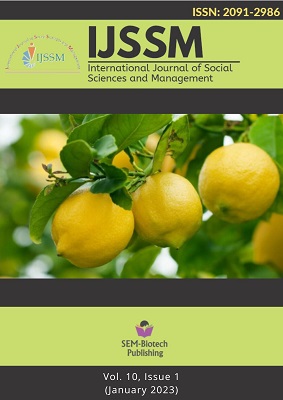SWOT Analysis of Water Induced Disaster Management Policy, 2072 of Nepal
DOI:
https://doi.org/10.3126/ijssm.v10i1.50876Keywords:
SWOT, Public Policy, Water Induce Disaster, DWIDM, Disaster ManagementAbstract
SWOT analysis is a simple and useful framework for analyzing strengths, weaknesses, opportunities, and threats of any plans, programs, projects and policies developed by an institution. The government of Nepal had formulated and implemented water-induced disaster management policy in 2072 B.S. which was analyzed using SWOT matrix with the help of document analysis and interview methods. Addressing water induced disaster as policy problems, participatory approaches, resource allocation and identification of hazard and vulnerabilities are the strengths of this policy. However, the implementation is not being successful due to lack of institutional ownership and confusing jurisdiction of work among the government institutions, which is the major weakness of the policy. The policy should take opportunities for its improvements according to the new constitution, national policy for disaster risk reduction, and federal setup. Lack of political and institutional commitment, and implementing agencies at central, provincial and local levels, are the main threats to this policy. It is mandatory to implement this policy after successive improvement for sustainable water-induced disaster management in Nepal, in which SWOT analysis helps for decision-making and critical analysis of this policy.
Int. J. Soc. Sc. Manage. Vol. 10, Issue-1: 1-4.
Downloads
Downloads
Published
How to Cite
Issue
Section
License
Copyright (c) 2023 International Journal of Social Sciences and Management

This work is licensed under a Creative Commons Attribution-NonCommercial 4.0 International License.
This license enables reusers to distribute, remix, adapt, and build upon the material in any medium or format for noncommercial purposes only, and only so long as attribution is given to the creator.




